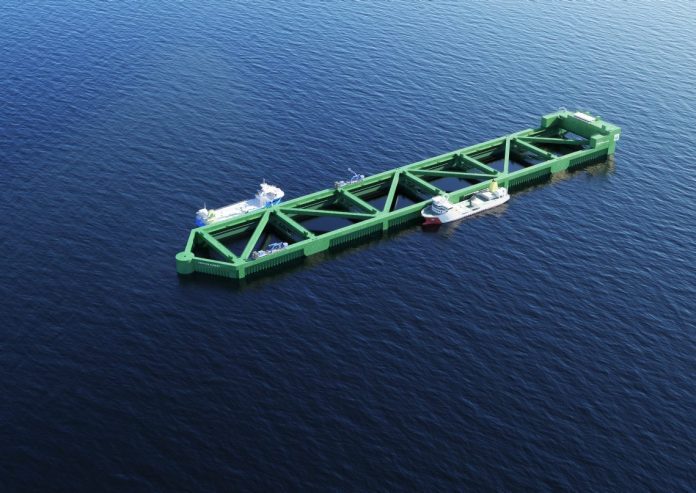“Work has now started with the first Havfarmen(sea farm). Progress is going according to plan,” Nordlaks Project Manager, Bjarne Johansen, told SalmonBusiness.
Last winter the Norwegian aquaculture company Nordlaks inked an agreement with the Chinese shipyard CIMC Raffles for the build of the first Havfarmen, a giant 385 metres long and 59,5 metres wide grow-out which will hold up to 10.000 tonnes of fish.
Build due to start in autumn
The launch of the Havfarmen is planned for the spring of 2020, and an application has been made for the location of this event on the outer reaches of Hadseløya in Nordland, Norway.

“The cutting of the steel for construction is planned to start this autumn, so the build hasn’t actually started yet,” said Johansen.
Nordlaks isn’t the only company with an offshore concept. It’s barely a year since SalMar started production in its sea cage construction, Ocean Farm 1, in the waters of Frohavet, north of Frøya.
This summer SalMar CFO, Trond Tuvstein, informed SalmonBusiness that Ocean Farm 1’s stock would be harvested in the third quarter of 2018. Production has so far progressed well, but the site has been subjected to rough weather at times.
Making the most of the environmental potential
– How will the Havfarmen safeguard fish welfare in bad weather?
“Exposed areas have other environmental conditions than protected areas, when it comes to for example water replacement. Meanwhile, exposed sites face challenges connected to strong currents and waves. In order to exploit sea acreage that is more exposed for marine farming, you have to construct a solution that makes the most of the potential in the exposed environment, while protecting the fish against overburdening. We have achieved this with the Havfarmen,” said Johansen.
– What about handling of sick fish in exposed areas, with factors such as dense biomass and storms?
“Obviously, if disease strikes, it poses a challenge. That’s how it is with all farm sites. Challenges in Havfarmen will not be any greater than those faced by a typical fish farm that has a dense biomass, as long as the logistics and capacity are adjusted accordingly to any requirements,” said Johansen.
Speculations
So far there have been few lice detected at SalMar’s site. Nordlaks expects the same to be the case with them in regard to lice. When asked about the risk of spreading and “in-house infection” in the Havfarmen, Johansen replied:
“That’s speculation. You can imagine all types of scenarios, but like I said, we believe we have a concept that rules out any significant challenges from sea lice.”
Johansen explained further that the construction will be stocked by large, lice-free salmon, and that production time in the Havfarmen will be relatively short.
“We anticipate a different situation with regard to lice, due to both the location and production strategy. Havfarmen 1 will lie at least ten kilometres from other marine farm sites. The idea is to have a short production process. We will release large, lice-free fish averaging 1-1.5 kg in weight into it. In that way we can shorten production time significantly. We envision that the lice status in the Havfarmen will be very different from that seen at typical operations where the farm sites are located close to one another”.


